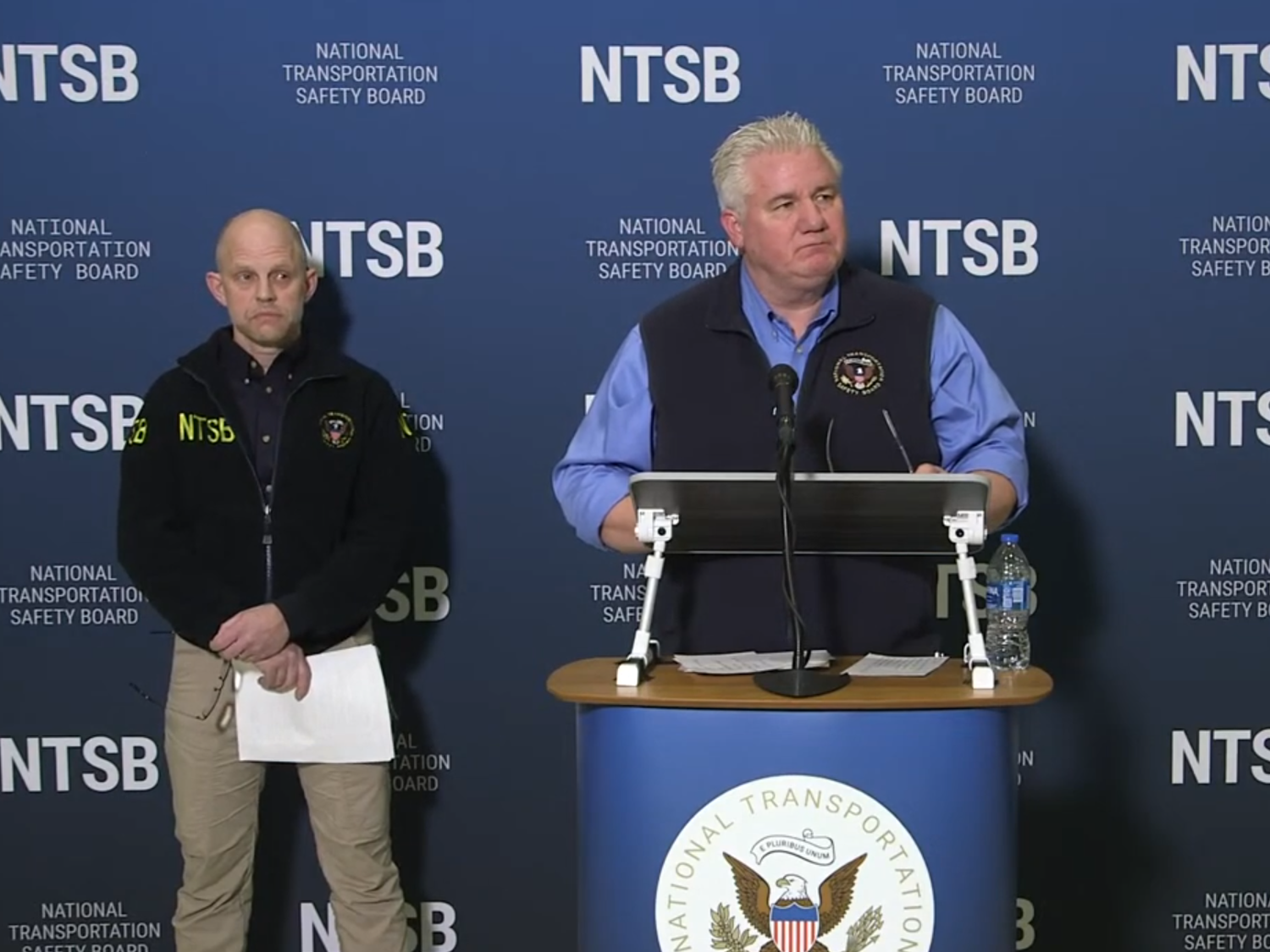Washington Mid-Air Collision: CRJ Received Traffic Alert, Attempted Last-Second Pitch-Up Before Impact
On Saturday, February 1, the National Transportation Safety Board (NTSB) held a press conference to provide updates on the ongoing investigation into the accident. The session was led by Board Member Todd Inman and Chief Investigator Bryce Banning.
Inman reaffirmed the agency's commitment to aviation safety and emphasized the importance of this investigation in shaping future recommendations. Banning, with extensive experience in analyzing aviation incidents, detailed the procedures used to recover and examine key evidence.
Flight Recorders and Initial Findings
The NTSB recovered the CRJ's flight recorders, including the Flight Data Recorder (FDR) and Cockpit Voice Recorder (CVR), with the support of the FBI. Both devices, manufactured by L3 Harris, contain crucial information about flight parameters and cockpit conversations. The FDR recorded 400 flight parameters, while the CVR stored over two hours of high-quality audio. A dedicated team was formed to transcribe the CVR and analyze the data in collaboration with the FAA and PSA Airlines.
The Blackhawk helicopter was conducting a training flight and may have been using Night Vision Goggles (NVG) at the time of the accident. Its flight recorder, which was also recovered, showed signs of water exposure. Moisture extraction procedures are being applied to preserve the stored information. It has not yet been determined whether the crew had the NVG activated.
Preliminary Flight Data Analysis
Initial data analysis reveals that the CRJ was flying at approximately 325 feet above the ground at the time of impact, while preliminary radar readings from the control tower indicated that the helicopter was at 200 feet. These figures are subject to verification once the full FDR download from the helicopter is completed.
Communications and Air Traffic Control Conditions
Communications between the control tower and both aircraft were conducted on different frequencies:
- The CRJ operated on VHF,
- The Blackhawk used UHF.
This means that while both pilots could hear the control tower, they could not hear each other. At the time of the accident, five air traffic controllers were in the control tower, including a supervisor and assistants. Interviews with the local controller, ground controller, and local assistant have been completed, but supervisors' statements are still pending.
Flight data analysis shows a slight increase in the CRJ's pitch angle one second before impact, suggesting a possible evasive maneuver. The discrepancy in altitude readings between tower reports and FDR data remains under investigation. The use of different frequencies between the CRJ and the Blackhawk was confirmed as a standard practice.
The decision to change the approach from Runway 1 to Runway 33 was made by the tower and accepted by the pilots after a brief discussion. Investigators are assessing whether the Blackhawk may have exceeded its assigned altitude limit, but additional FDR data from the helicopter is still needed to confirm this.
Accident Timeline (Local Time, EST)
- 20:15 – The CRJ begins its descent from 37,000 feet.
- 20:39:10 – Visual approach "Mount Vernon" to Runway 1 is authorized.
- 20:43:06 – Contact with DCA tower; pilots accept runway change to 33.
- 20:45:27 – The tower reports traffic south of the Wilson Bridge.
- 20:46:29 – Automated 1,000-foot alert in the CRJ.
- 20:47:29 – The CVR records a "Traffic, traffic" alert.
- 20:47:42 – The tower instructs helicopter "Pat 25" to pass behind the CRJ.
- 20:47:43 – The CRJ increases its pitch angle.
- 20:47:44 – Impact occurs, and recording ends.
TCAS Alert and Last Maneuvers
Flight data records indicate that in the final seconds before impact, the CRJ’s TCAS (Traffic Collision Avoidance System) issued an automatic "Traffic, Traffic" alert at 20:47:29. However, it has not been confirmed whether the crew verbally acknowledged the alert.
Thirteen seconds later, at 20:47:42, air traffic control instructed the Blackhawk with callsign Pat25 to pass behind the CRJ. There is no record of an explicit response from the commercial aircraft's crew.
One second later, the CRJ began to increase its pitch angle, suggesting a possible evasive maneuver in response to a perceived imminent threat. The impact was recorded one second later, with audible sounds captured in the CVR recording before it abruptly ended.
As the CVR transcription is still in progress, the NTSB continues evaluating whether the crew had any verbal interaction regarding the traffic alert or ATC communication in the final moments of the flight.
The NTSB is still analyzing flight recorder data, radar recordings, and controller testimonies. The goal is to accurately determine the sequence of events and maneuvers leading up to the impact. The investigation remains ongoing, and the board is committed to providing updates as new findings emerge.


Comentarios
Para comentar, debés estar registrado
Por favor, iniciá sesión